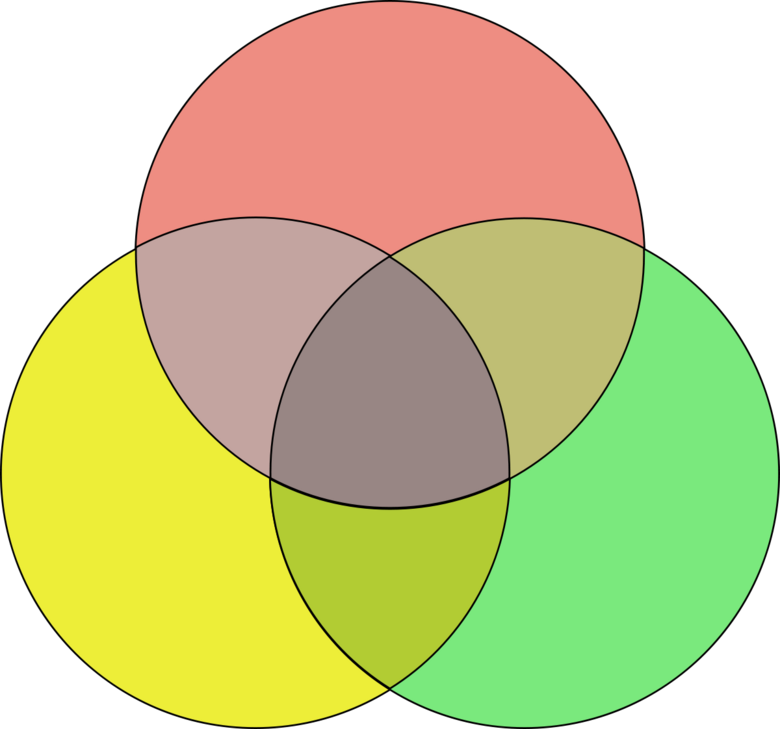- Author:
- Aleshea Willis
- Subject:
- Secondary English Language Arts, Professional Learning
- Material Type:
- Diagram/Illustration, Lesson Plan, Reading
- Level:
- High School
- Tags:
- License:
- Creative Commons Attribution Non-Commercial
- Language:
- English
- Media Formats:
- Downloadable docs, Text/HTML
Education Standards
Summary/Connections Notes
SummaryVennDiagram
Summarize and Connect Readings Using Google Docs and Drawings

Overview
This lesson teaches students how to summarize argumenative articles and find connections in the authors' arguments and purposes.
Summary
This lesson will use Google Docs and Drawings to assist students in summarizing readings and finding relevant connections between them.
Time Frame: One lesson
Format: Can be adapted to any format--Synchronous, Asynchronous, Face-to-face, Virtual
Background for Teachers
- To teach this lesson, you will need an understanding of how to use Google Docs and Google Drawings
- You will need knowledge about how to summarize informational articles and find relevant connections between them.
- You will also need to have taught students how to summarize and annotate a text.
- The follwoing resources can help you teach this topic:
- Lesson on using Google Drawings
- They Say/I Say or other argumentative essays for review.
- You may find a collection of argumentative essays in Utah's Online Library under the Points of View resource tab.
Step 1 - Goals and Outcomes
Learning Intentions:
- Students will be able to summarize the arguments presented by an author and analyze how these arguments compare to another author.
Success Criteria:
- Students will summarize the main points of two argumentative articles and explain the similarities and differences in the articles.
Step 2 - Planning Instruction
Student Background Knowledge
- Prior to this lesson, students will need to have an understanding of how to summarize an informational text by extracting the main points of a piece of writing.
- Prior to this lesson, students will need to have an understanding of how to synthesize large amounts of information into a brief summary.
- Prior to this lesson, students will need to have an understanding of how to analyze graphs to determine the author's meaning and purpose.
- Prior to this lesson, students will need to have an understanding of how to annotatate a text.
Strategies for Diverse Learners
- Use dictataion tools such as Dragon Dictation to assist students with reading fluency or read articles out loud in small groups.
- Break large articles into pieces and have the students summarize each small portion at a time.
- Provide a tool for students to look up unkown words such as an online dictionary.
- Teach and encourage annotation while reading.
- Work in small groups to look at and discuss the meaning of the graphs used by the authors.
Step 3 - Instruction
Instructional Procedures
- Review with students the basics on how to summarize a text. You may use this site to help your students review.
- Students will now read argumentative articles such as Should Everyone Go To College? and The New Liberal Arts found in the text They Say/I Say.
- Argumentative articles can also be found using Utah's Online Library Points of View resource.
- While reading these essays, encourage students to annotate the text by highlighting, writing notes in the margins (or on sticky-notes), underlining, etc.
- Students may work in small groups to read and annotate out loud.
- After students have completed reading and annotating the first article, instruct students on how to fill out the Summary/Connections Notes page by making a copy on Google Docs. Students are to look at their annotations and synthesize the main points of the article into a bulleted summary list.
- For differentiation, the teacher may assign students to complete this activity on Google Docs by working together on one collaborative document.
- Note: teacher may also embed these activities into a Canvas assignment for students to complete on the assignmgent page.
- For differentiation, the teacher may assign students to complete this activity on Google Docs by working together on one collaborative document.
- Once students have completed reading, annotating, and summarizing the first article, they will repeat the process for the second article.
- Now that the students have summarized both articles, they will complete a comparison activity using a Venn Diagram completed on Google Drawings.
- The teacher may have the students use this pre-made digram on Google Drawings, or teach the students how to make one on their own.
- This Google Applied Digital Skills lesson may be a good resource for teacher and students to review.
- The teacher may have the students use this pre-made digram on Google Drawings, or teach the students how to make one on their own.
- Students are to take their summaries and condense them even further to place under the appropriate section of the Venn Diagram.
- Next, students will analyze the completed summaries and list the commonalities and differences in the two arguments. Students must list at least 5 points. Encourage students to BE SPECIFIC in their thoughts.
- Discuss as a class the main poitns of each article and how they agree or disagree with each other. Allow students to analyze which author had the stronger argument and the reasons behind their position.
Step 4 - Assessments
Assessing Student Learning
- Students will be assessed for comprehension and ability to pull out main points via observations as they read and annotate texts.
- Students will be assess via small group and whole-class discussion on the articles and connections for specificity in connections.
- Students' Summary and Connectiosn Venn Diagram will be assessed using the attached rubric. They will be assessed on their summary, connections, and comprehension of the texts.